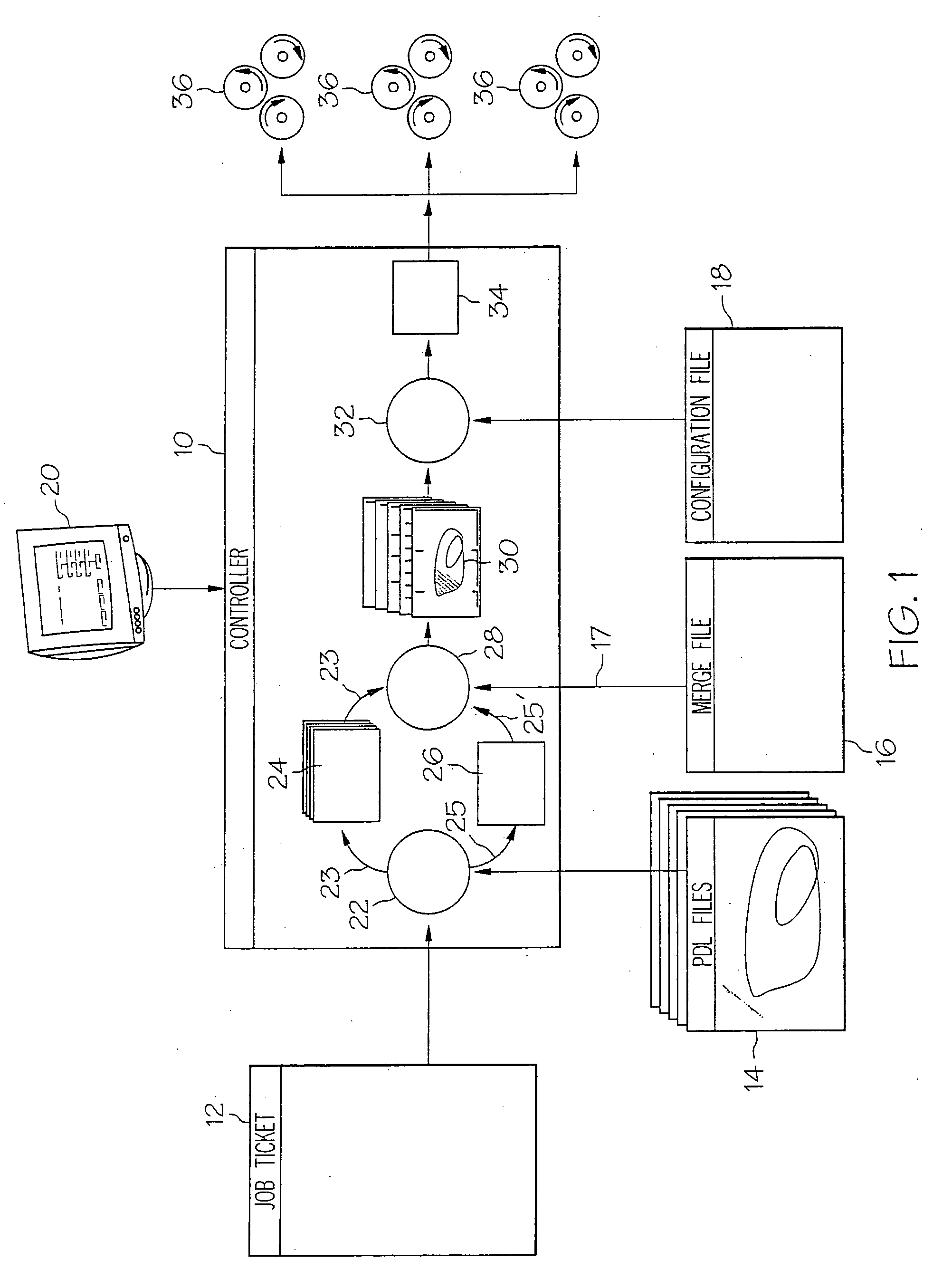Method and system for dynamic flowing data to an arbitrary path defined by a page description language
a dynamic flow and page description technology, applied in the field of high-speed printing industry, can solve the problems of slowing the entire printing system, not including text or data flowing capabilities in typical pdl languages, and the processing time required to interpret and render one-hundred thousand pdl specifications, and achieve the effect of high-speed variable data printing operation
- Summary
- Abstract
- Description
- Claims
- Application Information
AI Technical Summary
Benefits of technology
Problems solved by technology
Method used
Image
Examples
Embodiment Construction
[0034] As shown in FIG. 1, a system for performing the method of this invention includes a printer controller 10 having access to a job ticket file 12, a page description language (“PDL”) file 14, a source of variable data such as a merge file 16, and an optional printer configuration file 18. The system also contains an operator control terminal 20 for providing operator controls such as indicating the name and path of the job ticket file 12 for the specific print job.
[0035] The job ticket file 12 contains the guidelines for the print job which can include the names and locations of the PDL file(s) 14, the merge file(s) 16, the configuration file(s) 18, etc.; and may also include special instructions pertaining to features such as data wrapping, described below. The PDL file 14 is preferably a PostScript® (registered TM of Adobe Systems, Inc.) specification created by an application program, such as a word processor, illustrator, or computer-aided design system. The merge file 16 ...
PUM
 Login to View More
Login to View More Abstract
Description
Claims
Application Information
 Login to View More
Login to View More - R&D
- Intellectual Property
- Life Sciences
- Materials
- Tech Scout
- Unparalleled Data Quality
- Higher Quality Content
- 60% Fewer Hallucinations
Browse by: Latest US Patents, China's latest patents, Technical Efficacy Thesaurus, Application Domain, Technology Topic, Popular Technical Reports.
© 2025 PatSnap. All rights reserved.Legal|Privacy policy|Modern Slavery Act Transparency Statement|Sitemap|About US| Contact US: help@patsnap.com



